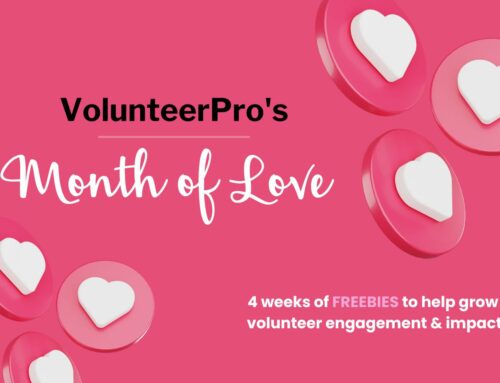
5 Surprising Myths About Volunteers and Donors
Are volunteers and donors different kinds of people? Do they deserve different investments or treatment at our nonprofits based on their “value” as supporters? Should we consider volunteers as donors and vice versa?
When we think about how volunteers and donors are treated at our agencies, they’re often managed differently. The investments in staffing, support, and resources often look different. Even how they are referred to may be different, regardless of if groups are contributing to the nonprofit mission as community supporters.
Research suggests even the pay scales for development directors versus volunteer services directors are different — despite similar required skill sets. Development staff enjoy higher salaries over all and are more often included on the agency’s leadership team.
The influx of resources and differing treatment seems to suggest that volunteers and donors are separate (and not equal) groups that require (or deserve) a different level of investment. But, are they really that different?
Does it make strategic sense for nonprofits to prioritize one group over another? Let’s look to the research to find out.
Viewing Volunteers as Donors: Busting the Myths About Volunteers and Donors
Several studies point to the surprising connections between volunteers and donors and call into question conventional thinking about these groups.
Here are a few myths that deserve a second look.
MYTH: Volunteers and Donors are Distinctly Different Groups
It’s best to start thinking of volunteers as donors. In fact, volunteers are donors and donors are volunteers. Many of your current volunteers may have already made donations to your agency.
According to an early study by Fidelity® Charitable Gift Fund and VolunteerMatch, two-thirds (67%) of Americans who have volunteered in the past 12 months say they generally make their financial contributions to the same organizations where they volunteer.
What’s more, those same active volunteers say they are more likely to increase their donations in the future when compared to people who have never volunteered (32% of volunteers compared with 26% of non-volunteers).
MYTH: There is Little Correlation Between Volunteering and Giving
A more recent study of Fidelity® Charitable Gift Fund donors uncovered even more significant connections between giving time and giving money as well as deep investments in organizations as volunteers.
They found …
- Most (79%) donors surveyed volunteered in the last 12 months, and among those volunteers, more than two-thirds (67%) committed 50 or more hours to volunteering
- Nearly half (49%) volunteered for three or more organizations
- 84% of volunteers expected to maintain or increase their commitment to volunteering in coming years
- 87% of volunteers said there is an overlap between their volunteer and financial support
- Half (50%) said they give more financial support because they volunteer
Clearly, volunteering does not preclude financial support. In fact, they may actively reinforce one another.
MYTH: Volunteering is Declining While Individual Giving on the Rise
According to the most recent data from the U.S. Corporation for National and Community Service (CNCS), one in three American adults (30.3%) volunteered through an organization, demonstrating that volunteering remains an important activity for millions of Americans.
Since the previous report in 2016, the overall volunteer rate has increased by more than 6%. This has been a welcome turn of events as volunteerism rates has remained flat over the previous decade. Nearly 77.4 million Americans volunteered 6.9 billion hours last year. Based on the Independent Sector’s estimate of the average value of a volunteer hour ($24.14 in 2017), the estimated value of this volunteer service is nearly $167 billion.
In contrast, according to the most recent research reported by Giving USA, total charitable giving in the United States rose 0.7% over the total of $424.74 billion contributed in 2017. Adjusted for inflation, total giving declined 1.7%. What’s more, individual donations declined 1.1% in 2018 (a decrease of 3.4%, adjusted for inflation), totaling an estimated $292.09 billion.
So, as volunteer involvement surges in the current environment, donations to charities lag.
MYTH: Volunteers Lend Time Because They Don’t Want to Give Money
In 2017, volunteers donated to charity at twice the rate of non-volunteers. In addition, volunteers invested in community-building. They did something good for the neighborhood at three times the rate of non-volunteers, and did favors for neighbors at nearly twice the rate of non-volunteers.
These results confirm an overall trend of volunteer generosity. CNCS research shows that from 2013-2015, 40.3% of non-volunteers donated to charity while 78.7% of volunteers made cash contributions.
In reality, many volunteers are happy to give both time and money to causes they care about.
MYTH: Once a Volunteer Stops Serving, They No Longer Want to Support You
Author and fundraising expert Michael Rosen has made the case (backed with data) that not only do volunteers donate at significant rates over non-volunteers, volunteers are also more likely to engage in planned giving at the same rate as donors. In fact, those who only volunteer or only make financial contributions are more than twice as likely to make a planned bequest than those who do neither.
Moreover, Rosen also argues that volunteers act as valued ambassadors, speaking with friends, family, and professional colleagues about organizations they support and their missions. This free word of mouth marketing has the potential for cultivating additional volunteer and philanthropic support.
FACT: Volunteers are Donors and Donors are Volunteers
In the end, the arbitrary categories and boxes we place our supporters in have no bearing on reality.
Our supporters don’t see the imaginary lines drawn in the sand, and neither should we.
Instead, what we should honor is the overlap. How can our development department and volunteer services work more closely together? How can the cultivation of a unified, purposeful continuum of engagement become the foundation for everyone? How might that change the strategy, staffing structure, and support we give both sides?
Most important, how can we better align with the lifestyles, hopes, and desires of our supporters as both volunteers and donors so we can make an even deeper difference together?





